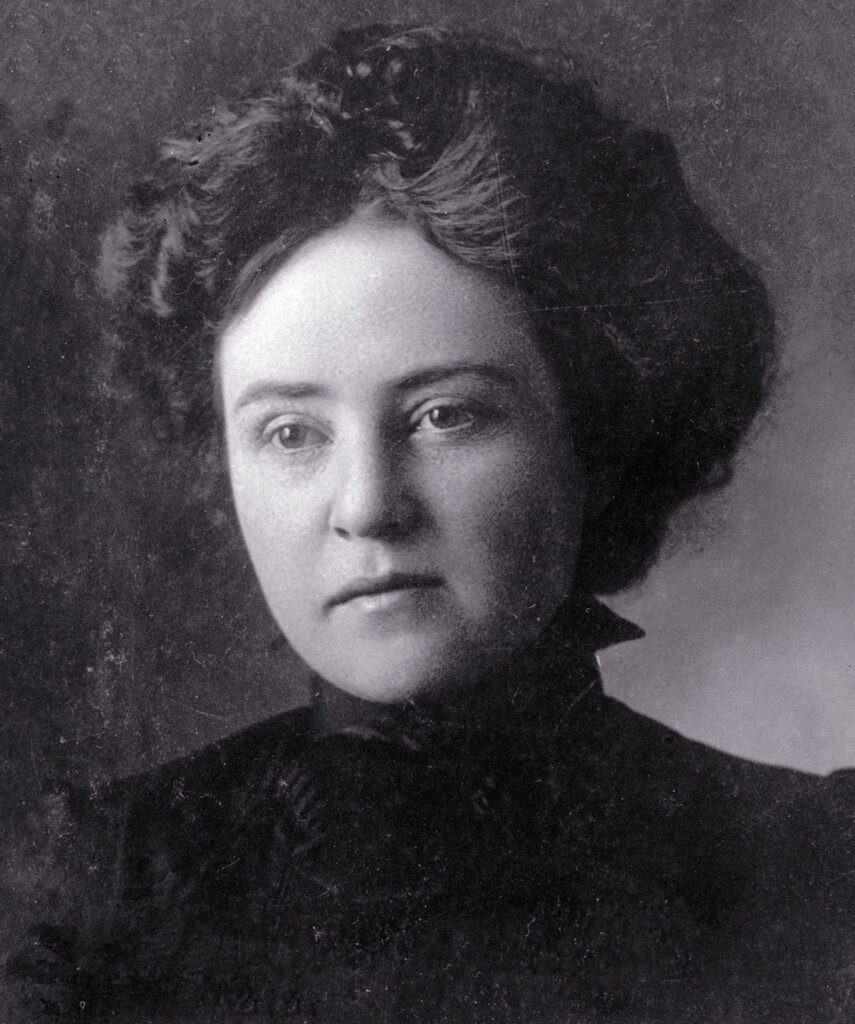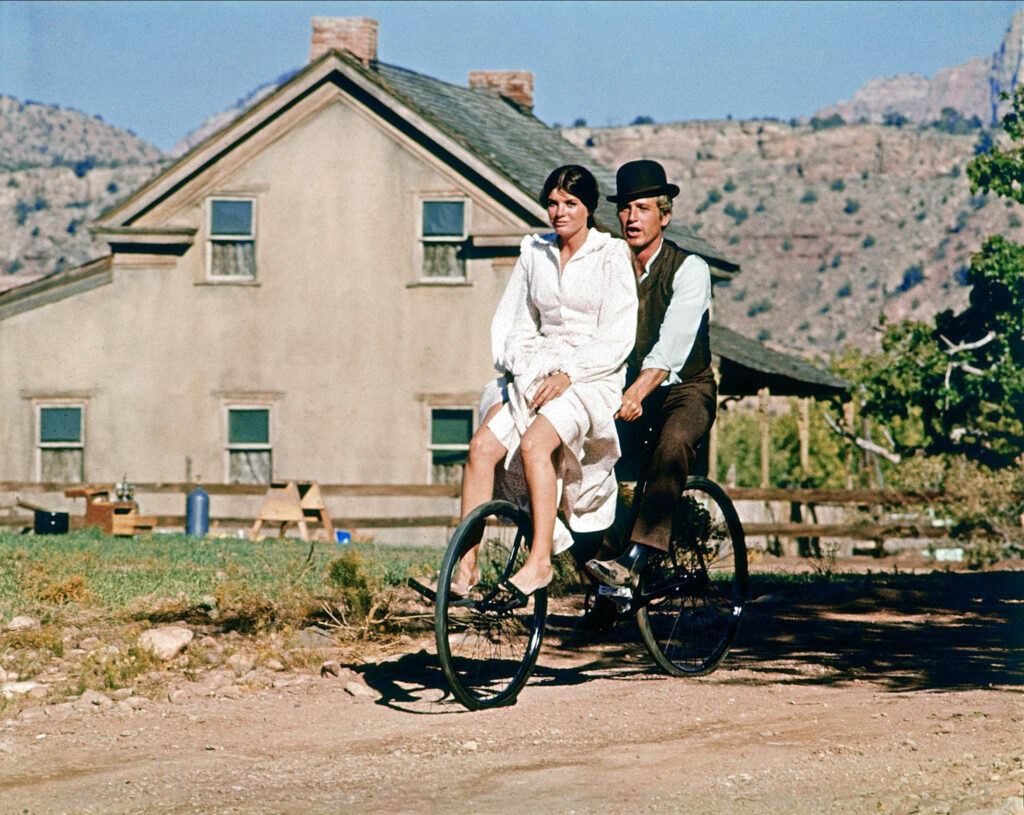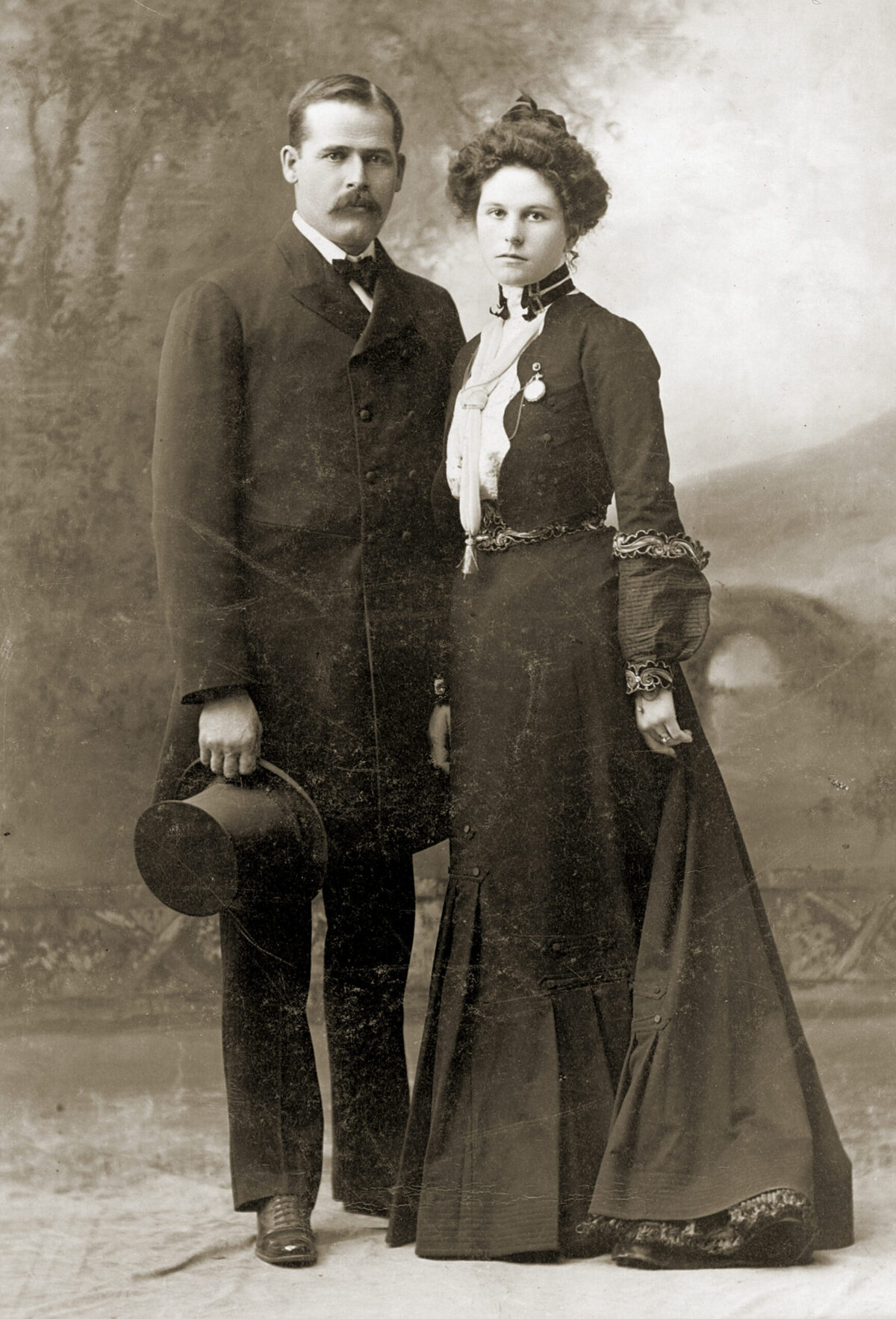Who was Etta Place?
She was the lover and perhaps wife of Pennsylvania-born Harry Alonzo Longabaugh, aka the “Sundance Kid,” and a peripheral associate of the Wild Bunch, the outlaw gang headed up by Robert LeRoy Parker, aka “Butch Cassidy.” But little is known about her origins and less about what happened to her after Sundance and Butch were killed in South America.
Larry Pointer, author of the 1977 book In Search of Butch Cassidy, wrote that Etta’s identity is “one of the most intriguing riddles in Western history.”
Place was likely born in 1878 and as an adult was described as having “classic good looks,” with a nice smile and a refined bearing, a description confirmed by a full-length portrait of her and Longabaugh—some say the couple’s wedding picture—taken in February 1901 at Joseph B. De Young’s photo studio at 815 Broadway in New York City. She spoke in an educated manner and knew how to handle a rifle.
She had met Longabaugh a year or two earlier and may have been involved in some of the Wild Bunch robberies, scoping out a bank in advance or holding the group’s horses during a heist. But the New York City picture, historian Thom Hatch wrote in his 2013 book The Last Outlaws, “hints of proper high teas, Central Park carriage rides and evenings at the theater.”
Even her name is probably false. “Place” was the maiden name of Longabaugh’s mother, Annie, and Sundance sometimes used the alias “Harry Place.” It has been suggested she took to using the first name “Etta” in South America after Spanish speakers mispronounced “Ethel,” which may or may not have been her actual first name. The Pinkertons variously referred to her as Ethel, Eva, Rita, Etta and Betty Price.
In a letter to friend David Gillespie shortly after the gang’s June 2, 1899, train robbery near Wilcox, Wyo., Longabaugh enclosed a copy of the portrait of himself and Place, whom he described as his wife and a “Texas lady.” The Pinkertons, who spent a lot of time and effort pursuing the Wild Bunch, always believed Etta was from Texas, which fits with her noted skills with horses and firearms. In 1906 William Pinkerton, his detectives having traced Place to Fort Worth, asked that city’s police chief to “find out who this woman is.”
Based on the theory Etta’s real name was Ethel and she hailed from Texas, researcher Donna Ernst compiled a list of all women named Ethel born in or around Fort Worth and San Antonio between 1875 and ’80. Over time she eliminated each as a contender for the youthful Etta Place.
Except one.

That one was Ethel Bishop, who resided with four other women in what was probably a brothel near notorious madam Fannie Porter’s San Antonio pleasure palace, a known Wild Bunch hangout. Another oft repeated story suggests Butch rescued Etta from a brothel when she was 16. Longabaugh biographer Ed Kirby believes Place was the daughter of one Emily Jane Place of Oswego, N.Y., who was related somehow to Sundance’s mother. Still others have suggested Etta was in fact Colorado rancher Ann Bassett, a Wild Bunch associate known to have vied with sister Josie for Cassidy’s affection.
Could Bassett have won Sundance’s attentions as well?
Probably not. By 1903 Bassett had married Hirum “Hi” Henry Bernard and that same year was arrested (and later acquitted) on a charge of cattle rustling while Place was in South America.
On Feb. 20, 1901, after posing for their portrait, Place and Longabaugh boarded HMS Herminius in New York, disembarking in Buenos Aires, Argentina, on March 23. Traveling with them was Cassidy, using the alias “James Ryan” and claiming to be Etta’s brother. In 1902 Place and Longabaugh returned briefly Stateside for Etta to seek treatment of an unknown disease, and again in 1904, when Pinkerton operatives believed she visited family in Texas. In 1906 Place returned Stateside for keeps, possibly due to her illness. Sundance returned to South America, where most historians believe he and Butch died in a 1908 shootout with soldiers in Bolivia.
Meanwhile, Etta vanished.
Several researchers have suggested she became a brothel operator in Fort Worth under the name Eunice Gray. But in an article in the October 2010 Wild West Donna Humphrey-Donnell noted she’d seen an alleged portrait of the young Gray, and the woman in that photo definitely “was not the same woman seen in the famous New York City portrait of Etta Place and the Sundance Kid.”
In 1909 an unidentified woman fitting Etta’s description asked a U.S. diplomatic official in South America for help in obtaining Longabaugh’s death certificate. But she never returned to his office. At most, however, the incident only proves Place was alive in 1909.
Other theories have since surfaced: that Etta was the wife of legendary boxing promoter Tex Rickard; that she relocated to Paraguay and remarried; that Longabaugh had survived the 1908 shootout in Bolivia and lived happily ever after with Place in Alaska; that Etta died in the 1906 San Francisco earthquake; or that she was either killed during a domestic dispute or took her own life in Argentina in the 1920s. In 1970 Cassidy’s sister, Lula Parker Betensen, told Los Angeles Times reporters that her brother had not been killed in Bolivia as thought, and that Etta had lived out her days as a schoolteacher in Denver.

In the end, speculation, guesswork and coincidence aside, we only know for certain she was a pretty woman who once carried on a romance with the Sundance Kid and then disappeared from the pages of history.
Nothing more.
To this day similarly incredible tales circulate about Butch Cassidy and the Sundance Kid, stories relating their escape from the Bolivian gunfight and their subsequent lives of anonymity in various locales out West or in South America.
Like the theories surrounding Etta Place, though, they are unsubstantiated and probably false.
But tempting.
This article originally appeared in the Spring 2024 issue of Wild West magazine.





